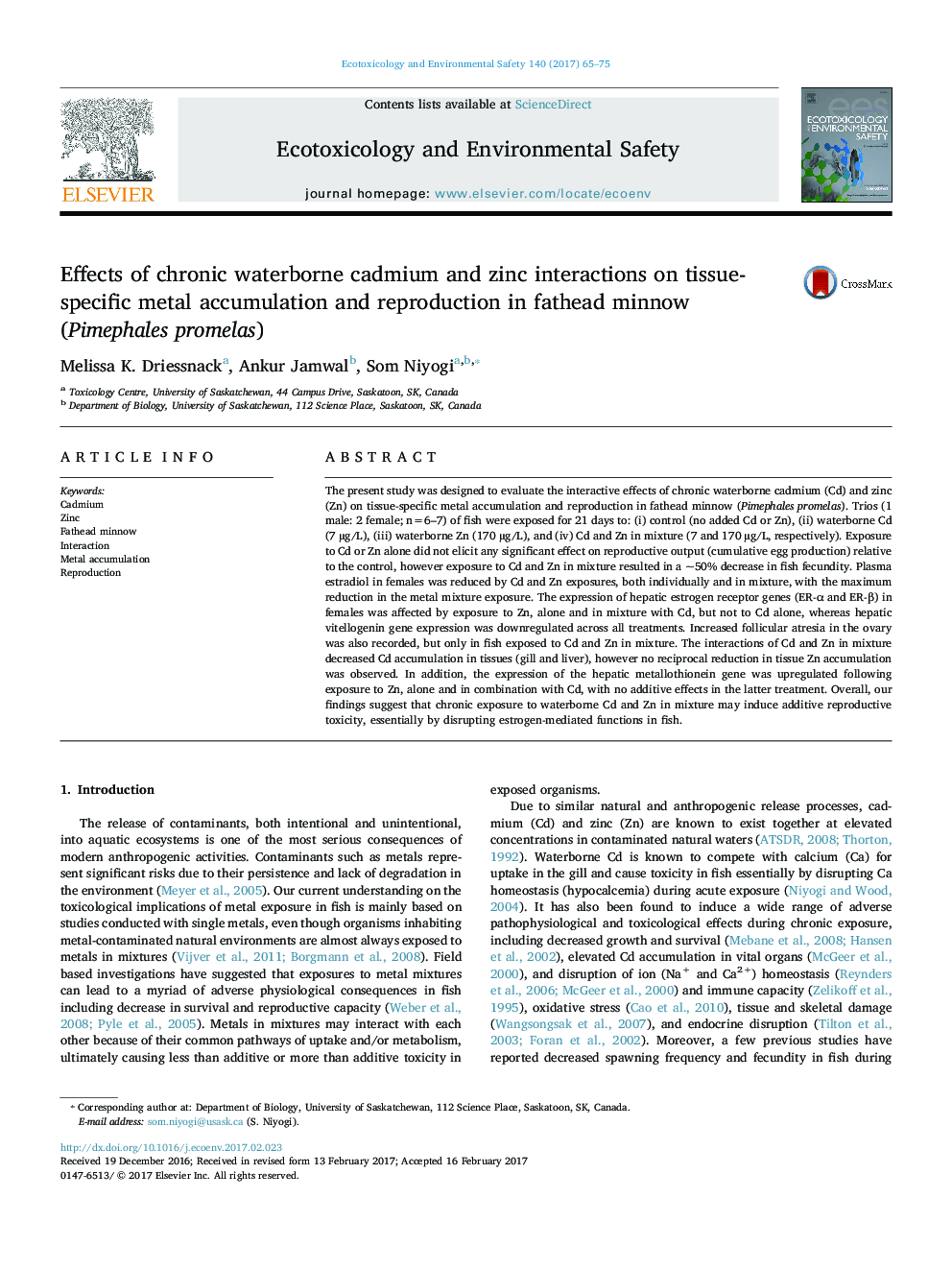| Article ID | Journal | Published Year | Pages | File Type |
|---|---|---|---|---|
| 5747690 | Ecotoxicology and Environmental Safety | 2017 | 11 Pages |
Abstract
The present study was designed to evaluate the interactive effects of chronic waterborne cadmium (Cd) and zinc (Zn) on tissue-specific metal accumulation and reproduction in fathead minnow (Pimephales promelas). Trios (1 male: 2 female; n=6-7) of fish were exposed for 21 days to: (i) control (no added Cd or Zn), (ii) waterborne Cd (7 µg/L), (iii) waterborne Zn (170 µg/L), and (iv) Cd and Zn in mixture (7 and 170 µg/L, respectively). Exposure to Cd or Zn alone did not elicit any significant effect on reproductive output (cumulative egg production) relative to the control, however exposure to Cd and Zn in mixture resulted in a ~50% decrease in fish fecundity. Plasma estradiol in females was reduced by Cd and Zn exposures, both individually and in mixture, with the maximum reduction in the metal mixture exposure. The expression of hepatic estrogen receptor genes (ER-α and ER-β) in females was affected by exposure to Zn, alone and in mixture with Cd, but not to Cd alone, whereas hepatic vitellogenin gene expression was downregulated across all treatments. Increased follicular atresia in the ovary was also recorded, but only in fish exposed to Cd and Zn in mixture. The interactions of Cd and Zn in mixture decreased Cd accumulation in tissues (gill and liver), however no reciprocal reduction in tissue Zn accumulation was observed. In addition, the expression of the hepatic metallothionein gene was upregulated following exposure to Zn, alone and in combination with Cd, with no additive effects in the latter treatment. Overall, our findings suggest that chronic exposure to waterborne Cd and Zn in mixture may induce additive reproductive toxicity, essentially by disrupting estrogen-mediated functions in fish.
Related Topics
Life Sciences
Environmental Science
Environmental Chemistry
Authors
Melissa K. Driessnack, Ankur Jamwal, Som Niyogi,
